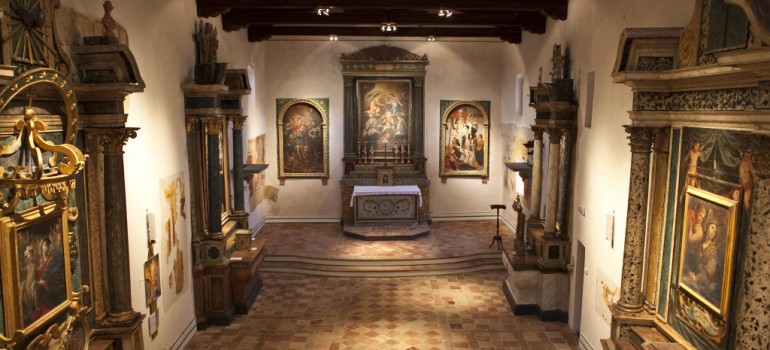
The oldest part of the Church of the Annunziata, dating back to 1265, when the chaplain of the church of St. Paul, located outside the walls, obtained by Rainaldo bishop of Ascoli, to carry his parish in the castle and had by the bishop himself the first stone of the new church. A precisely record the presence of a church of St. Paul in castro is to consider the news, that the abbot of Farfa in 1448 welcomed the oratory of St. Paul, the brothers who had had to leave the primitive home, located on near the hill of St. Francis, devastated by the year 1388. In 1456 Fermani dates the oldest bell in the church, which was certainly commissioned by the monks, which also changed the name of the church, dedicating it to Annunziata. The Annunziata was still in possession of the Franciscans in 1554. On October 5, 1652 Pope Innocent X suppressed the smaller monasteries, and the Annunziata was soon entrusted (18 April 1653) to the secular clergy and with three, and then four chaplaincies. The building of worship, a nave without apse, with adjoining a small sacristy, is accessed by a rough stone portal Ascoli, cashed in unadorned surface of the facade. Inside the oldest fresco in a niche on the left wall near the entrance (to the immediate left of the altar dedicated to St. Maria del Soccorso) depicts the Virgin and Child flanked by Saints, and can be dated to the second half the fifteenth century. Of great interest are the figures of saints (especially a St. Joseph, painted on the north wall of the presbytery, to the left of the high altar, commissioned in 1540 by a lady Chaterina Lelia), unearthed in 1970, while it was not never held the large fresco in the niche on the back wall, to the right of the main altar depicting a Deposition from the Cross, dated 1530 and variously attributed to Cola dell’Amatrice or the teacher Giacomo Bonfini from Patrignone The most valuable painting in the church of ‘Annunziata, however, is the altarpiece, painted in oil on wood, depicting St. Anthony Abbot enthroned, St. Anthony of Padua and St. Job (2.25 × 1.70 m) by Vincenzo Pagani (1490 about -1568).
Altri monumenti a Cossignano
 Lascia un commento
Lascia un commento